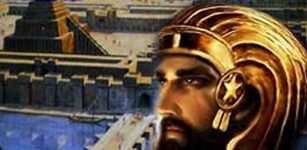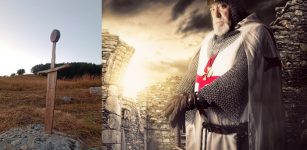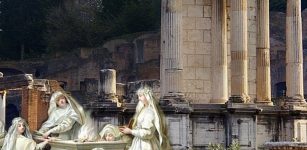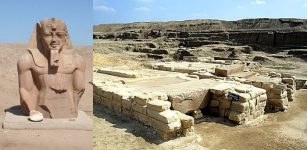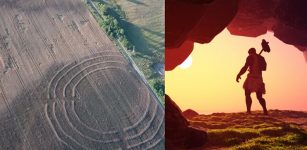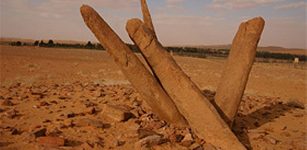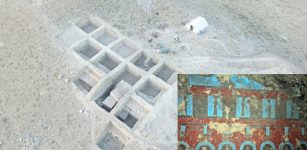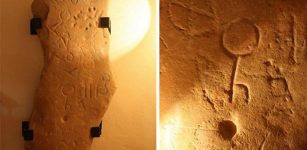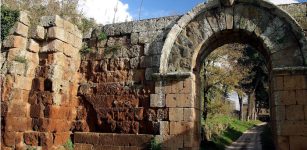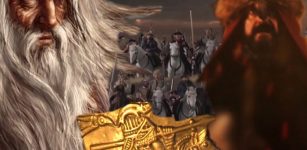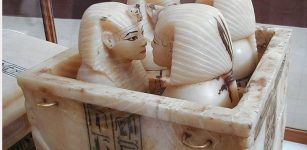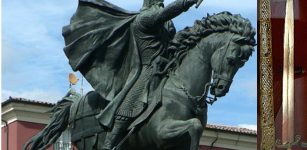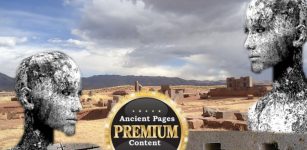Large Ancient Egyptian Astronomical Observatory In The Buto Temple Discovered In Kafr El-Sheikh, Nile Delta
Jan Bartek - AncientPages.com - Like many ancient civilizations, the ancient Egyptians were deeply fascinated with the night sky, actively studying planets, stars, the moon, and other celestial objects. Astronomy was integral to their lives and is prominently reflected in Egyptian mythology through numerous references to celestial bodies such as the Sun, Moon, planets, and stars. The ancient Egyptians were well-known for their religious beliefs intertwined with profound astronomical knowledge.
Ruins of mudbrick buildings on the northern mound of Buto-Desouk. Credit: Faris knight - CC0
In recent years, scientists have significantly advanced our understanding of how the ancient Egyptians interpreted these celestial bodies. Notably, researchers have uncovered insights into the hidden role of the Milky Way and its connection to the Egyptian Goddess Nut. Additionally, scientific studies suggest that astronomical observations may provide clues about what inspired the builders of Egypt's iconic pyramids.
For example, scientists have discovered a connection between Alpha Draconis and Egyptians Pyramids.
Previous research has revealed that the ancient Egyptian papyrus Cairo 86637 calendar is the oldest preserved historical document of naked eye observations of a variable star, the eclipsing binary Algol - a manifestation of Horus, a god and a king.
It has been confirmed that ancient Egyptians knew about ‘Demon Star’ Algol’s variability 3,000 years before Western astronomers.
Students of Egyptology already know ancient Egyptians were skilled astronomers who regularly watched the skies and tracked various heavenly objects. Every archaeological discovery like the one made now in the Kafr El-Sheikh, Nile Delta, gives us a better understanding of this subject.
The Supreme Council of Antiquities (SCA) has announced the discovery of the oldest and largest astronomical observatory in the Buto Temple at the Tel El-Faraeen archaeological site in Kafr El-Sheikh Governorate.
Artifacts found at the at the Tel El-Faraeen archaeological site in Kafr El-Sheikh. Credit: Supreme Council of Antiquities (SCA).
The astronomical observatory, built from mud brick in the 6th century B.C., was important for tracking solar and stellar movements.
“It highlights the advanced astronomical knowledge of the ancient Egyptians, including their ability to determine the solar calendar and significant religious and agricultural dates,” said Mohamed Ismail Khaled, Secretary General of the Supreme Council of Antiquities (SCA).
Credit: Supreme Council of Antiquities (SCA).
Credit: Supreme Council of Antiquities (SCA).
The recent archaeological finding offers valuable insights into the advanced techniques used by the ancient Egyptians despite their reliance on simple tools. Among the notable discoveries are a rare slanted stone sundial and remnants of a large mudbrick building, considered to be the largest of its kind from that period.
Credit: Supreme Council of Antiquities (SCA).
Credit: Supreme Council of Antiquities (SCA).
Credit: Supreme Council of Antiquities (SCA).
The observatory features an L-shaped central hall, a substantial mudbrick wall reminiscent of the iconic pylon entrances found in ancient Egyptian temples, and several storage rooms.
Ayman Ashmawy, head of the ancient Egyptian antiquities sector, reported that the mission also unearthed various artifacts. These include a statue from the 26th Dynasty, a Merkhet measuring tool, and religious items and pottery linked to daily life and rituals.
See also: More Archaeology News
This discovery enhances our understanding of ancient Egypt's scientific and religious practices. It highlights the importance of ongoing archaeological efforts in uncovering new dimensions of Egypt’s rich historical legacy.
Written by Jan Bartek - AncientPages.com Staff Writer
Expand for references







